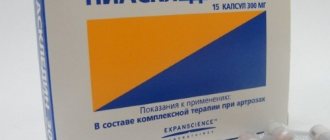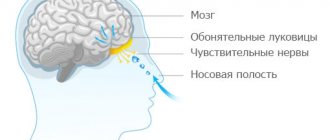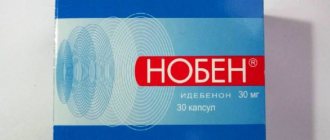6 positive
1 neutral
2 negative
- Write a review
Your rating for the drug:
(11 votes, average: 3.82 out of 5)
Sermion is a vasodilator drug that helps normalize peripheral and cerebral circulation. The main active ingredient is nicergoline. Penetrating inside the body, it improves rheological blood readings, metabolic and hemodynamic processes in the brain.
The drug is prescribed for chronic, metabolic and acute cerebrovascular insufficiency. When taken regularly, it normalizes the cognitive functions of the brain and reduces the manifestations of dementia. See instructions for use of the drug Sermion.
To form an idea of the degree of effectiveness and safety of Sermion, you should read the reviews of those who have taken the drug, as well as relevant specialists.
Pharmacological properties of the drug Sermion
Pharmacodynamics. After oral administration, it is quickly and extensively metabolized to form a number of metabolites, which also have an effect at various levels of the central nervous system. Sermion has a positive effect on the emotional state, ability to concentrate and level of vigor. After oral administration, Sermion causes various neuropharmacological effects: it not only increases glucose consumption by brain tissue, enhances the biosynthesis of proteins and nucleic acids, but also affects various neurotransmitter systems. Increased choline acetyltransferase activity and muscarinic receptor density were also observed after prolonged oral administration of Sermion. In addition, in both in vitro and in vivo , nicergoline significantly increased acetylcholinesterase activity. Both after single and long-term oral administration of the drug, the exchange of basal and agonist-sensitive phosphoinositide increases. Sermion also enhances the activity and translocation of Ca-dependent PKC isoforms across the membrane. These enzymes are involved in the mechanism of secretion of soluble amyloid precursor protein, which leads to increased release and decreased production of pathological beta-amyloid, as demonstrated in cultured human neuroblastoma. The antioxidant effect and activation of detoxification enzymes by Sermion protects nerve cells from death due to oxidative stress and apoptosis in experimental models in vivo and in vitro . Sermion attenuates the age-dependent decline in nitric oxide synthetase mRNA in neurons, which improves cognitive function. Pharmacokinetics. Nicergoline is rapidly and almost completely absorbed after oral administration. The peak of serum radioactivity after administration of low doses (4–5 mg) of radiolabeled nicergoline was observed after 1.5 hours. However, with oral administration of therapeutic x doses (30 mg) of 3H-labeled nicergoline, the peak of serum radioactivity in the blood serum was observed after 3 hours. The half-life of the drug is approximately 15 hours (healthy volunteers). The absolute bioavailability of nicergoline after oral administration is approximately 5%, due to high hepatic clearance and first-pass metabolism. After oral administration of nicergoline at therapeutic doses, the AUC values in radioactive serum were 81 and 6%, respectively, for the main metabolites MDL and MMDL (healthy volunteers). Peak plasma concentrations of MDL and MMDL were achieved approximately 1 and 4 hours after dosing with a half-life of 13 and 14 hours. Nicergoline is rapidly hydrolyzed due to binding with esters after intravenous administration. The drug is quickly and extensively distributed in tissues. The volume of distribution of nicergoline was 105 L, which likely reflects the metabolism of the drug in the blood and its penetration into blood cells and/or tissues. Nicergoline binds extensively to plasma proteins (90%), with greater affinity for α-acid glycoprotein than for serum albumin. Urinary excretion is the main route of excretion, since 80% of the total dose of radiolabeled nicergoline is determined in urine and only 10–20% in feces. When administered orally in doses of 30–60 mg, it has been established that the pharmacokinetics of nicergoline is linear. Nicergoline is extensively metabolized before elimination. The main route of metabolism is hydrolysis of ester bonds to form the metabolite MMDL. The following biotransformation leads to the formation of the metabolite MDL by demethylation. The demethylation process occurs with the participation of the catalytic action of the CYP 2D6 isoenzyme. The metabolite MDL is mainly formed, accounting for 50% of the total dose and 74% of the radioactivity detected in urine. As a secondary metabolic pathway, 1-dimethylnicergoline is formed by demethylation (1-DN) and then metabolized by hydrolysis of ester bonds into MDL. In patients with severe renal impairment, there is a significant reduction in urinary MDL secretion.
Indications for use of the drug Sermion
Sermion tablets 5 mg, 10 mg, solution for injection (1 bottle - 4 mg):
- acute and chronic disorders of cerebrovascular metabolism due to atherosclerosis, thrombosis and embolism of cerebral vessels, transient disorders of cerebral circulation (transient ischemic attacks);
- acute and chronic peripheral vascular metabolic disorders (organic and functional lesions of the arteries of the extremities, Raynaud's disease and other syndromes that are associated with circulatory disorders);
- headache;
- as an additional therapy for hypertension (arterial hypertension);
- as an additional therapy for hypertensive crisis.
Sermion tablets 30 mg: conditions characterized by deterioration of cognitive function, post-stroke conditions, vascular dementia (multi-infarct dementia), degenerative conditions associated with dementia (senile and presenile dementia of the Alzheimer's type, dementia in Parkinson's disease).
TOP 10 analogues
Ten similar drugs that can replace Sermion, many of them are much cheaper, but are in no way inferior in quality to expensive foreign drugs:
- Nicergoline
is a drug intended to improve cerebral circulation in cases where the disorder was identified in the early stages. It has a therapeutic effect through the direct effect of the active substance – nicergoline. - Nicergoline-Ferein
is a medication similar to the previous one, but supplemented with lactose derivatives. - Nicerium
is a drug that is used for similar neurological problems. The active substance is nicerium. Effective in chronic advanced cases. - Sergoline
is a more narrowly targeted medication designed to combat the manifestations of Alzheimer's disease and neurological disorders that were caused by impaired blood circulation in the brain. The active substance is also nicerium, but the drug consists of many additional components: lactose, cellulose, magnesium extract, talc, titanium dioxide. - Vasobral
is a general-action combination drug, the effect of which is achieved through dihydrogenated ergot derivatives. They block alpha receptors that stimulate circulatory disorders. - Mexidol
is a medicine that prevents the oxidation of cell membranes by the peroxide type. The effect is achieved through ethylmethylhydroxypyridine succinate. But it should be taken into account that the medication tends to have an actively expressed antihypoxic effect on the body’s cells (in other words, increasing the resistance of the body’s cells to the lack of incoming oxygen). - Cavinton
is a slightly different medication from previous drugs, since its action is aimed at dilating the blood vessels in the brain, thereby improving blood circulation in it. - Trental
also differs from similar medications in its effect on the body. It has a therapeutic effect mainly due to its effect on blood microcirculation in the vessels. A similar effect is achieved through a xanthine derivative and several auxiliary components. - Niceromax lyophilisate
is another drug whose composition is based on the production of nicergoline, which has the appropriate properties. - Sermion lyophilisate
is one of the varieties of Sermion, which is characterized by a less aggressive effect on the body.
All analogue medications are available in two dosage forms: an injection solution in ampoules, and tablets in a special protective shell.
Use of the drug Sermion
5 mg tablets: the recommended dose of the drug is 5–10 mg 3 times a day with equal intervals between doses for a long period of time. Dosage, duration and route of administration of the drug depend on the specific clinical situation. In some cases, it is advisable to begin treatment with parenteral administration of the drug with further continuation of treatment in the form of maintenance oral therapy. 30 mg tablets: the recommended dose of the drug is 1 tablet 1-2 times a day (30-60 mg). The usual daily dose for adults is 30 mg. Temporarily the daily dose can be increased to 60 mg. In case of vascular disorders of the eye or inner ear, the recommended dose is 30 mg per day. The drug should be taken before meals with a small amount of water, without chewing. If the dose is prescribed once a day, it is advisable to take the drug in the morning. Since renal excretion is the main route of elimination (80%) of nicergoline and its metabolites, it is recommended to reduce the dose in patients with impaired renal function (serum creatinine ≤20%). solution for injection : the drug is intended for parenteral use. For intramuscular administration, the recommended dose is 2–4 mg (2–4 ml) 2 times a day (using the supplied solvent). For intravenous administration, the recommended dose of Sermion is 4–8 mg, having previously dissolved it in 100 ml of 0.9% sodium chloride solution or 5% dextrose (glucose) solution. The drug should be administered intravenously slowly. At the doctor's discretion, this dose may be repeated throughout the day. If necessary, Sermion can be administered intra-arterially at a dose of 4 mg in 10 ml of 0.9% sodium chloride solution, slowly, over at least 2 minutes. The dose, duration of treatment and route of administration are determined by the doctor individually.
Opinions of neurologists and other specialists
In general, neurologists speak positively about the drug. It effectively eliminates unpleasant symptoms and quite rarely leads to adverse reactions.
psychotherapist
Gimadeeva G.F. (Positive feedback)
- Advantages: The drug is highly effective and rarely causes adverse reactions.
- Disadvantages: None found.
I prescribe it to my patients for cognitive disorders, high blood pressure and vascular pathologies. At a dosage of 10 mg three times a day, there is a significant improvement in general condition. The frequency of contractions of the heart muscle is normalized, memory and the ability to concentrate increase, blood pressure decreases and the head becomes clearer. It is tolerated quite well by patients. The duration of the therapeutic course is 1-2 months. I recommend taking two courses a year: one in the fall and one in the spring. Because at this time all chronic diseases usually worsen.
cardiologist
Svishchenko E. P. (Positive review)
- Advantages: In high doses (60 mg per day) normalizes cerebral hemodynamics, reduces platelet aggregation, helps restore impaired mechanisms of autoregulation of blood flow in the brain.
- Disadvantages: High level of effectiveness occurs at high doses.
In order to determine the degree of effectiveness of Semiron, we conducted a clinical study in standard and increased doses. The experiment involved patients (30 people) diagnosed with dyscirculatory encephalopathy, which progressed against the background of arterial hypertension. They were divided into two groups: in the first, the daily dose was 30 mg, and in the second, 60 mg. We used various methods to determine mental performance.
Before starting to use the drug, the patient experienced headache, memory loss, increased irritability, absent-mindedness, and dizziness. After the therapeutic course, patients from the second group had more pronounced positive results. In 9 people the headache went away completely, in 4 its intensity noticeably decreased.
Patients from the first group also noted an improvement in their condition, but the effect was less pronounced.
In general, the results of the study confirmed the beneficial effects of the drug on cerebral circulation, adhesiveness and platelet aggregation. Has a direct impact on indicators of psychofunctional status.
therapist and gerontologist
Korkushko Oleg Vasilievich (Positive review)
- Advantages: Does not cause side effects at standard and increased dosages, increases the volumetric velocity of blood flow.
- Disadvantages: None found.
A study was conducted in which 25 elderly patients took part. They were diagnosed with dyscirculatory encephalopathy of the second stage and ischemic disease. We divided all patients into two groups: with high blood pressure and with blood pressure within normal limits. During the study, we studied the clinical tolerability of the drug.
As a result, it turned out that in large doses Sermion is well tolerated by elderly patients and does not affect the heart rate. The drug helps reduce platelet aggregation activity and accelerates capillary blood flow.
See also:
Reviews of doctors and patients who took the drug Lozap® Plus
cardiologist
Morozov P.V. (Positive review)
- Advantages: Characterized by a wide spectrum of action.
- Disadvantages: None.
In the course of clinical studies, we found that the drug (hereinafter referred to as LP) exhibits a high degree of effectiveness in vascular dementia, chronic or acute abnormalities of blood circulation in the brain.
Acts as an alpha-adrenergic receptor antagonist, stimulates energy metabolism, modulates the metabolism of norepinephrine, dopamine and acetylcholine. Prevents the development of dementia and cognitive impairment in patients with atherosclerosis and arterial hypertension. Negative reactions occur quite rarely and are characteristic of drugs from the ergot class. They are of moderate severity and do not require additional treatment.
Research specialists
Mario Fioravanti and Leon Flicker (Neutral review)
- Benefits: Normalizes mild to moderate cognitive and behavioral functioning.
- Disadvantages: Elderly patients may experience negative effects.
A study was conducted to determine the appropriateness of the use of Sermion (nicergoline) in the diagnosis of dementia and age-related cognitive decline. The list of measured quantities included:
- Behavioral changes.
- Degree of functional efficiency.
- General impression of the drug.
- Admissibility of drugs.
- The quality of life.
- Mortality.
During the study, we used different evaluation methods and criteria. Upon completion, we determined that the main substance of the drug has a positive effect on behavior and cognitive functions. Some patients have reported associated side effects.
See also:
Reviews from neurologists and patients about Ginkgo Biloba®
Side effects of the drug Sermion
The following non-severe side effects have been reported rarely. From the gastrointestinal tract: constipation, nausea, vomiting, increased acidity of gastric juice, diarrhea, abdominal pain. From the cardiovascular system: arterial hypotension, dizziness, angina attacks, cold extremities, tachycardia. From the side of the central nervous system: dizziness, headache, confusion, drowsiness, insomnia. Allergic reactions: angioedema, itching, skin rash. Reproductive disorders in men: ejaculation disorders. General disorders: feeling of heat, hot flashes, sweating, pain in the limbs, increased body temperature. During clinical studies, an increase in uric acid levels in the blood was observed, which was independent of both the dose used and the duration of treatment.
Special instructions for the use of the drug Sermion
As a rule, Sermion in recommended therapeutic doses does not cause changes in blood pressure levels, however, in patients prone to hypertension (arterial hypertension), the drug can gradually reduce blood pressure levels. At the beginning of treatment, orthostatic hypotension may develop. For the treatment of patients with a history of hyperuricemia or gout and/or during concomitant treatment with drugs that affect the metabolism and excretion of uric acid, Sermion is prescribed with caution. Since approximately 80% of nicergoline metabolites are excreted in the urine, it is recommended to reduce the dose of the drug in patients with impaired renal function (serum creatinine 2 mg/dL or 175 mmol/L). The drug contains lactose, which must be taken into account when prescribing it to patients with congenital lactase deficiency, hereditary galactosemia and impaired absorption of glucose and galactose. The effect of using the drug develops gradually, so Sermion should be taken for a long time. It is advisable to evaluate the effect of therapy every 6 months to decide on the advisability of further use of the drug. While using the drug, you should refrain from drinking alcohol. Children. The drug is not used in children. Use during pregnancy and lactation. Toxicological studies have not demonstrated the teratogenic effect of nicergoline. Based on the indications, the use of the drug during pregnancy and breastfeeding is unlikely. If there are solid indications, the drug should be prescribed after considering the ratio of benefit to the mother/risk to the fetus (child). The ability to influence the reaction rate when driving a vehicle or while working with other mechanisms. Although the clinical effects of Sermion are used to improve concentration, its effect on the ability to drive vehicles and operate potentially dangerous machinery has not been studied. During treatment with the drug, and also taking into account the underlying disease, patients should be careful when driving vehicles or operating other mechanisms.
Comparative characteristics
When choosing one or another analogue, it is worth knowing which drug is better and what, let’s compare Sermion with the most popular synonyms.
Sermion or Nicergoline - which is better?
It’s worth starting with the active substance. In both medications it is nicergoline, so their effects on the body are identical.
The drugs are available in two forms - tablets and solution for injection. The dosage is also similar. The only difference is the duration of the course of treatment and the price.
When using Sermion, treatment will take at least 8 weeks, and when using Nicergoline - from 2 to 3 weeks. Price of medicines: 776 rubles and 346 rubles, respectively.
Vasobral - what is its strength?
Vasobral is a combination type drug and is used for chronic circulatory disorders (Sermion is used to treat advanced, but not chronic stages), the release forms of the drugs are similar, as are the instructions for use.
The main advantage of the medicine is the absence of contraindications and the possibility of its use during pregnancy. The cost is 776 rubles and 500 rubles, respectively.
Mexidol - what can we say about the popular analogue?
Mexidol is a medicine aimed at relieving a state of shock that interferes with the normalization of blood circulation in the brain.
The active substance is ethylmethylhydroxypyridine succinate. Mexidol in tablet form is taken no more than 6 capsules per day. The course of treatment is 1.5 months.
Also, while taking this medication, you should refrain from driving any vehicle, as the patient’s concentration and reaction speed are impaired. Cost in pharmacies: 776 rubles and 300 rubles, respectively.
Comparison with Cavinton
Cavinton is a drug that increases blood flow and reduces headaches by dilating blood vessels.
The active element is vinpocetine. The medication is used for neurological diseases. The dosage form is similar to Sermion, as are the instructions for use.
The course of treatment in the first and second cases is at least 8 weeks. Cost: 500 rubles.
Features of using Trental
Trental improves blood microcirculation, due to which the patient gets rid of migraines and chronic headaches. The active element is pentoxifylline.
The dosage form of release in the first and second cases is tablets and solution for injection. The method of application in the case of Trental is determined by the body weight, age and individual characteristics of the patient. Cost: 350 rubles.
Of the cheaper analogues, Niceline and Nicegoline-Deco should also be highlighted. They have the same active substance - nitseline, and the cost does not exceed 250 rubles.
Interactions of the drug Sermion drug Sermion
The drug should be used with caution in combination with:
- antihypertensive drugs (nicergoline may potentiate their effects);
- drugs that are also metabolized by the cytochrome CYP 2D6 system, since it is impossible to exclude interaction with these drugs (such as quinidine, most antipsychotics, including clozapine, risperidone, haloperidol, thioridazine);
- acetylsalicylic acid (bleeding time may prolong);
- drugs that affect the metabolism of uric acid (metabolism and excretion of uric acid may change).
Sermion should not be used simultaneously with drugs that excite the central nervous system, α- and β-adrenergic agonists. When used simultaneously with anticoagulant and antiplatelet agents, it is necessary to monitor the indicators of the lightening blood system. The drug may enhance the effects of cholinomimetic drugs.










